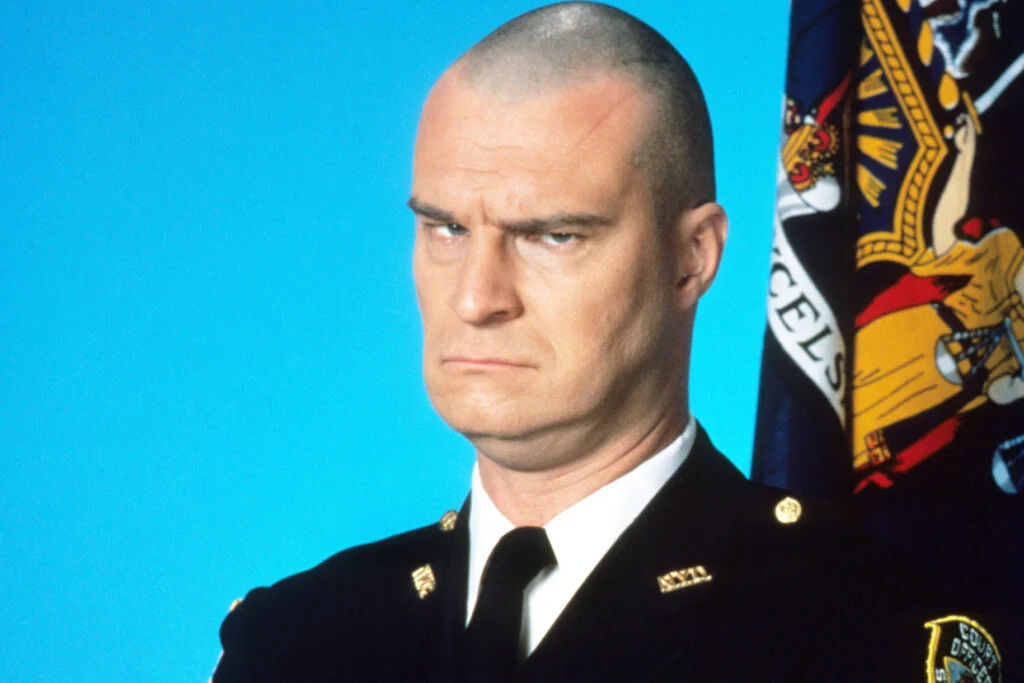The 1980s was a golden age for comedy, delivering larger-than-life characters who broke the mold and permanently embedded themselves in our cultural consciousness. These weren’t just funny people—they were walking catchphrases, fashion statements, and attitude personified. With their exaggerated personalities, unforgettable one-liners, and often questionable hairstyles, these iconic characters captured something special about the era’s love for excess and individuality. Let’s revisit the comedy legends who had us laughing then and still bring smiles to our faces today.
1. Alex P. Keaton (Michael J. Fox) – “Family Ties”
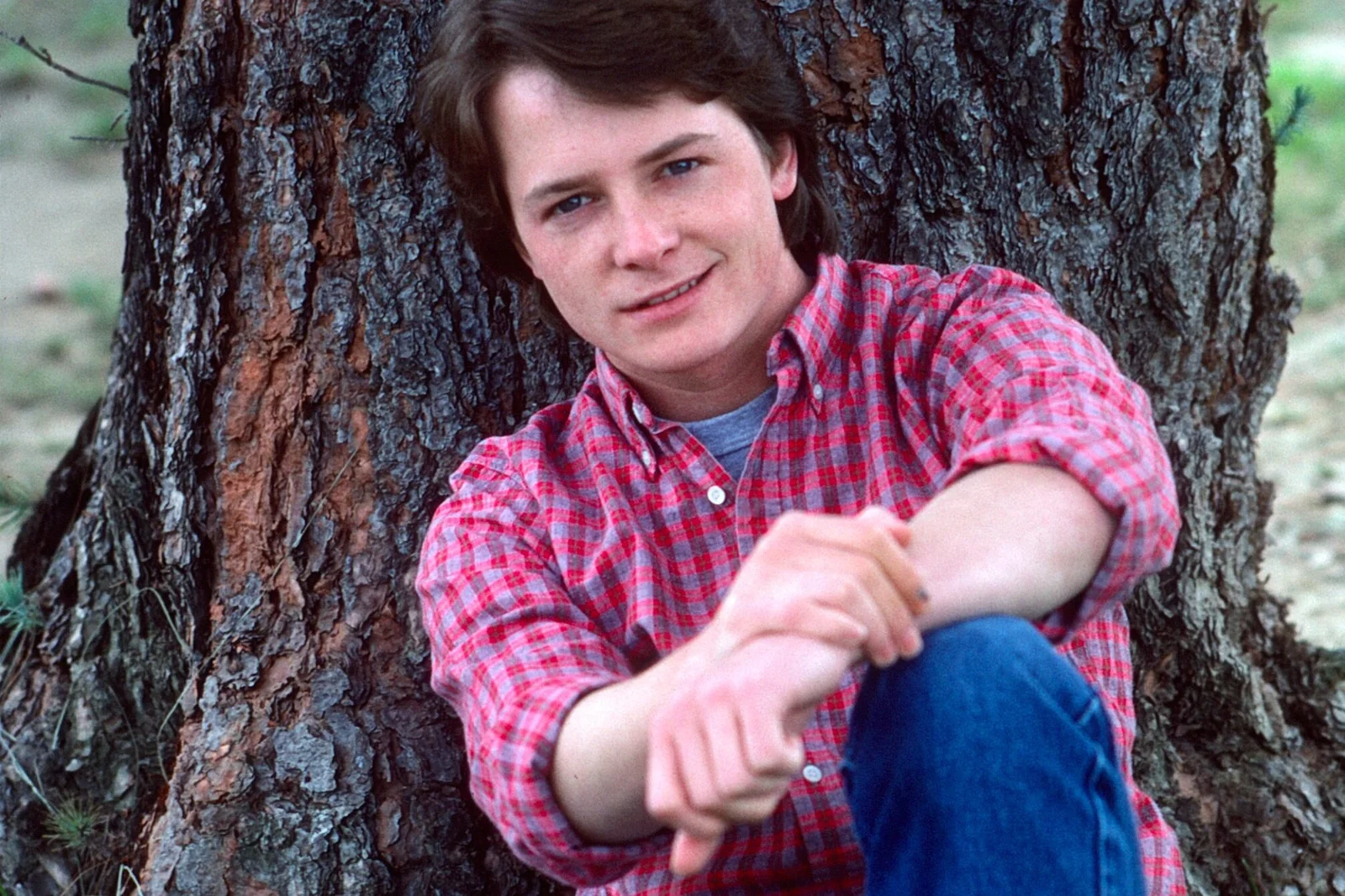
In an era dominated by liberal ex-hippie parents, Michael J. Fox’s portrayal of the Reagan-worshipping, suit-wearing, Wall Street Journal-reading teenager was a brilliant comic inversion. Alex P. Keaton paraded around his liberal household in ties and suspenders, spouting economic theory and conservative talking points while his former flower-child parents watched in bewilderment. His capitalist fervor and relentless ambition made him the ultimate ’80s overachiever, a walking embodiment of the decade’s materialistic values. This film earned special mention by Remind, unraveling the finale.
Fox’s impeccable comic timing transformed what could have been a one-note character into a surprisingly complex and endearing figure who audiences couldn’t help but root for. Originally intended as a secondary character, Alex quickly became the breakout star of “Family Ties,” earning Fox three consecutive Emmy Awards and making his character a poster child for Reagan-era conservatism. His catchphrases and mannerisms—from his signature “What?!” to his smug self-satisfaction—made him instantly recognizable and helped launch Fox into superstardom.
2. Reverend Jim Ignatowski (Christopher Lloyd) – “Taxi”
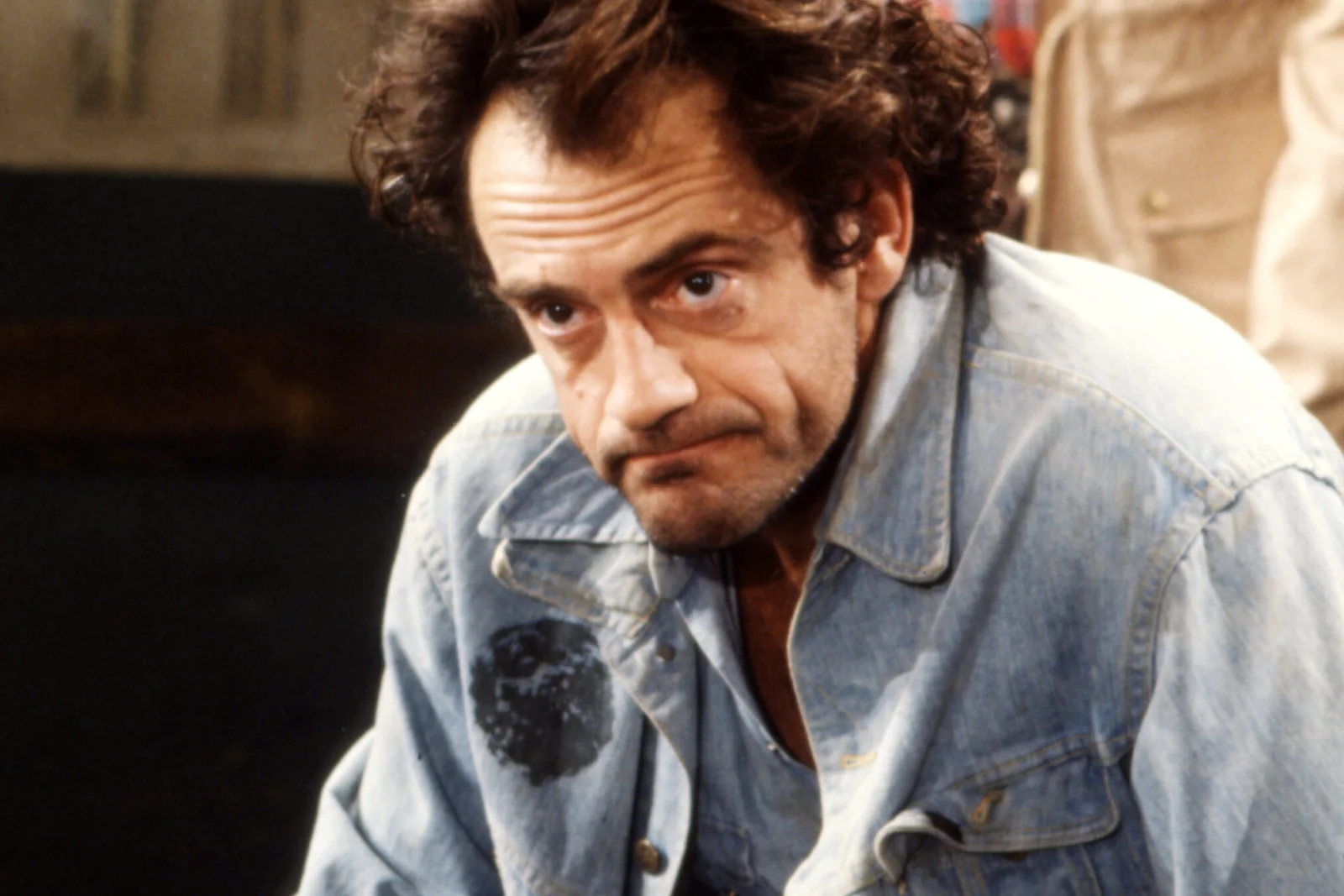
With his wild hair, vacant stare, and delightfully scattered thought process, Christopher Lloyd’s burnt-out cab driver was the human embodiment of the counterculture hangover. Reverend Jim’s drug-fried mind led him down bizarre tangents and philosophical rabbit holes, delivering profound wisdom and utter nonsense in the same breath with such conviction you couldn’t help but listen. His painfully slow and methodical recitation of a driver’s license exam (“What… does… a… yellow… light… mean?”) remains one of television’s most perfectly executed comic scenes. Variety offers some fascinating perspective on Lloyd’s lasting legacy.
Lloyd committed so completely to Jim’s physical eccentricities—the twitching, the startled reactions, the disoriented spinning—that the character transcended caricature and became strangely poignant. Originally appearing as a one-off guest character, Reverend Jim was so immediately beloved that producers brought him back as a regular, and Lloyd went on to win two Emmy Awards for the role. Beyond the hallucinatory humor, Lloyd imbued Jim with an innocent sweetness that made this over-the-top burnout unexpectedly lovable.
3. Arthur “The Fonz” Fonzarelli (Henry Winkler) – “Happy Days”
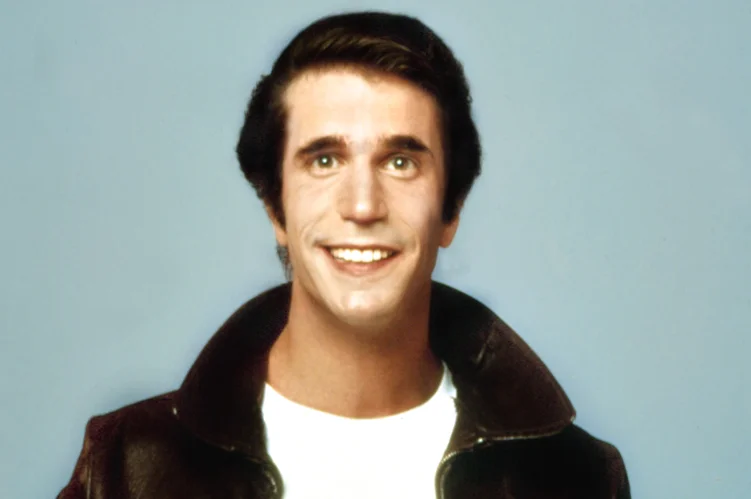
Though technically introduced in the ’70s, The Fonz reached his cultural peak in the early ’80s as the leather-jacketed epitome of cool who could start a jukebox with a punch and attract women with a snap of his fingers. Henry Winkler’s portrayal balanced impossible swagger with surprising vulnerability, turning what could have been a stereotypical tough guy into a complex character with hidden depths. His catchphrases (“Ayyy!” and “Sit on it!”) became playground staples, while his thumbs-up sign was mimicked endlessly by fans worldwide. According to MeTV, Winkler was instrumental in forging the character who, in turn, defined cool.
What made Fonzie truly iconic was how his character evolved from a secondary tough-guy stereotype into the show’s breakout star while maintaining his essential Fonzie-ness. Despite his limited wardrobe and repetitive mannerisms—or perhaps because of their consistency—The Fonz became television shorthand for effortless cool that persists to this day. When the Smithsonian National Museum of American History acquired Fonzie’s leather jacket in 1980, it confirmed what viewers already knew: this character had transcended television to become a genuine cultural touchstone.
4. Sophia Petrillo (Estelle Getty) – “The Golden Girls”
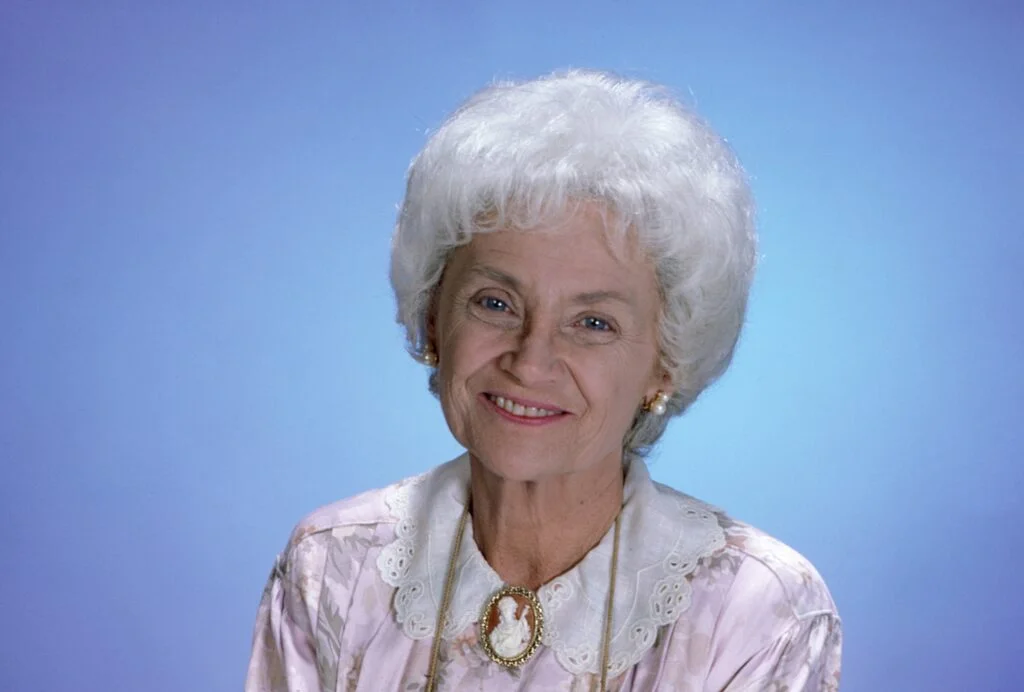
The diminutive Sicilian mother with the razor-sharp tongue and bottomless supply of “Picture it, Sicily…” stories, Sophia demolished stereotypes about elderly women on television. Despite being the oldest of the Golden Girls, Sophia was the most unapologetically outspoken, delivering blistering insults and frank commentary on everything from sexuality to death with impeccable comedic timing. Her wicker purse (which she carried everywhere as if containing state secrets) and cardigan-heavy wardrobe became instantly recognizable visual signatures.
What made Getty’s performance particularly remarkable was that she was actually younger than Bea Arthur, who played her daughter Dorothy, requiring significant makeup to age her appearance. Sophia’s over-the-top bluntness—allegedly the result of a stroke that eliminated her “filter”—gave the show license to tackle subjects usually considered taboo for prime-time television, especially involving older women. Her character helped reshape media portrayals of senior citizens as vibrant, sexual, and anything but docile, all while delivering some of the most quotable one-liners in television history.
5. Pee-wee Herman (Paul Reubens) – “Pee-wee’s Big Adventure” and “Pee-wee’s Playhouse”
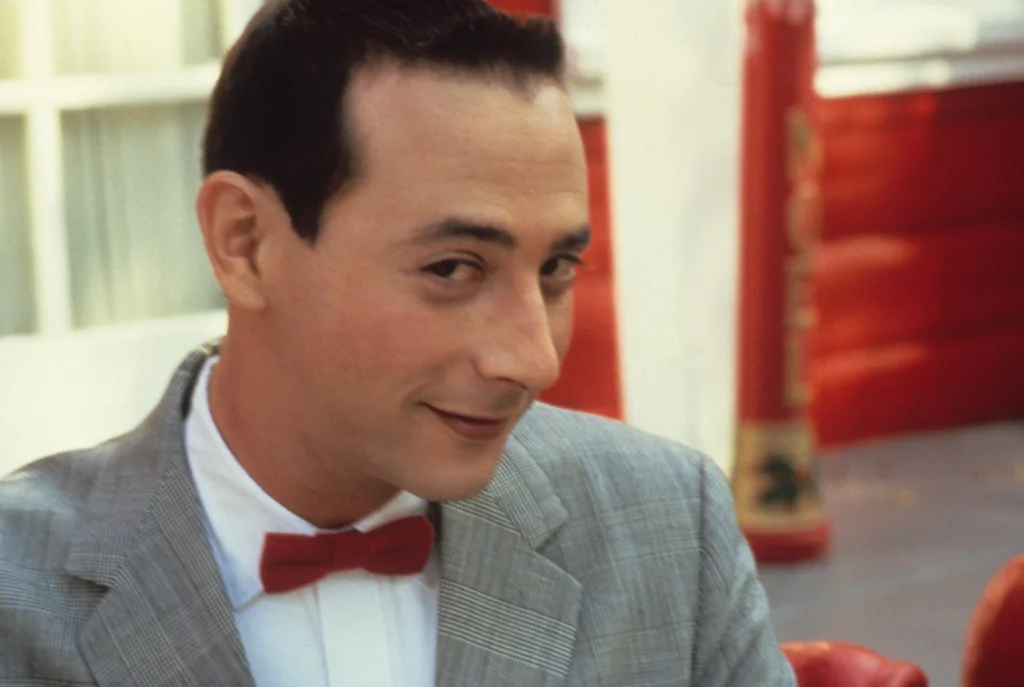
With his too-tight gray suit, red bow tie, and that laugh—that impossible, infectious laugh—Paul Reubens created a man-child character so distinctive he seemed to have emerged from some alternate universe. Pee-wee’s exaggerated movements, bizarre catchphrases (“I know you are, but what am I?”), and the surreal world he inhabited made him unlike anything else on screen in the 1980s. His Saturday morning children’s show “Pee-wee’s Playhouse” somehow managed to be simultaneously nostalgic, futuristic, psychedelic, and wholesome.
What elevated Pee-wee beyond mere novelty was the absolute commitment Reubens brought to the character, never breaking from Pee-wee’s worldview whether appearing on late-night talk shows or starring in films. The character existed in a strange middle ground—childlike but with adult undertones, sweet but with occasional meanness, vintage yet somehow avant-garde. Pee-wee’s cultural impact was so significant that even after scandal temporarily derailed Reubens’ career, the character eventually returned to widespread appreciation, proving that truly iconic creations can transcend even their creators’ controversies.
6. Beetlejuice (Michael Keaton) – “Beetlejuice”
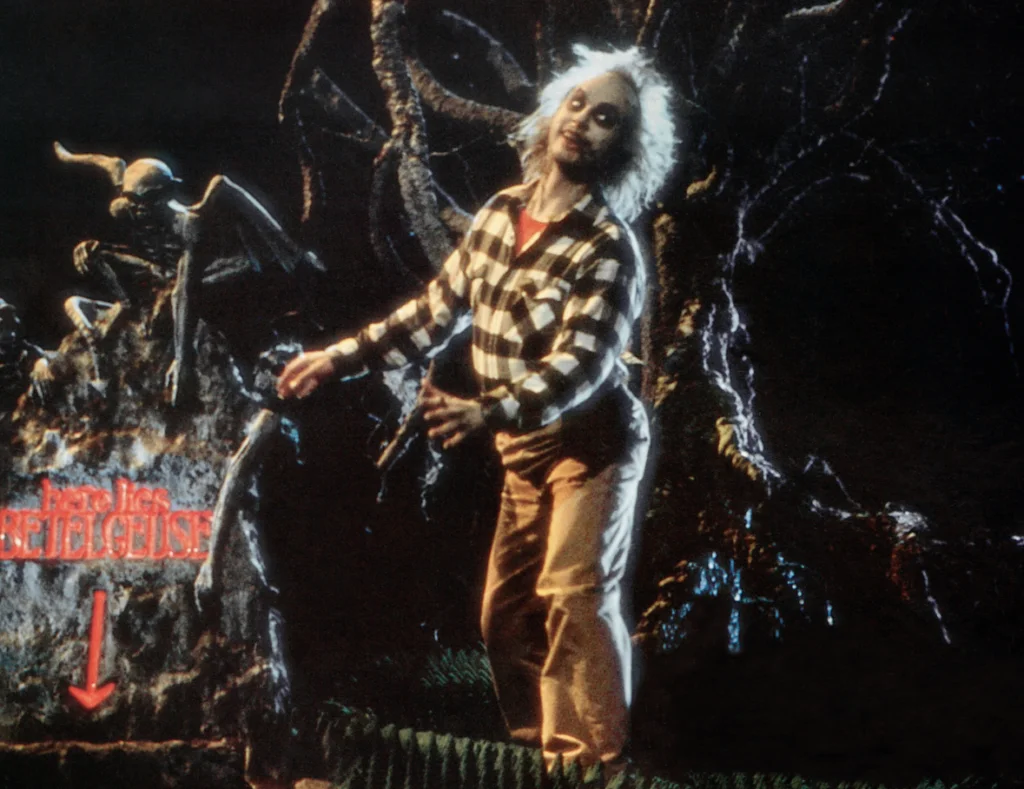
In just 17 minutes of screen time, Michael Keaton created one of cinema’s most memorable supernatural con men—a crude, lewd “bio-exorcist” with green hair, rotting teeth, and a mold-covered suit who was as repulsive as he was oddly charismatic. Keaton’s fully committed physical performance, with its unpredictable movements and contortions, made Beetlejuice seem genuinely otherworldly and dangerous. His rapid-fire delivery of outrageous one-liners and fourth-wall breaking asides turned what could have been a simple horror-comedy villain into an unforgettable force of chaos.
Director Tim Burton provided the visual framework, but it was Keaton’s anarchic energy and willingness to be genuinely unpleasant that made the character impossible to forget. Despite being the film’s antagonist, Beetlejuice so thoroughly stole the show that the movie bears his name, and audiences found themselves simultaneously repelled by and attracted to his malevolent mischief. The character struck such a chord that he spawned an animated series, theme park attractions, and endless Halloween costumes, proving that sometimes the most iconic characters are the ones who break all the rules of likability.
7. Mama Morton (Marla Gibbs) – “227”
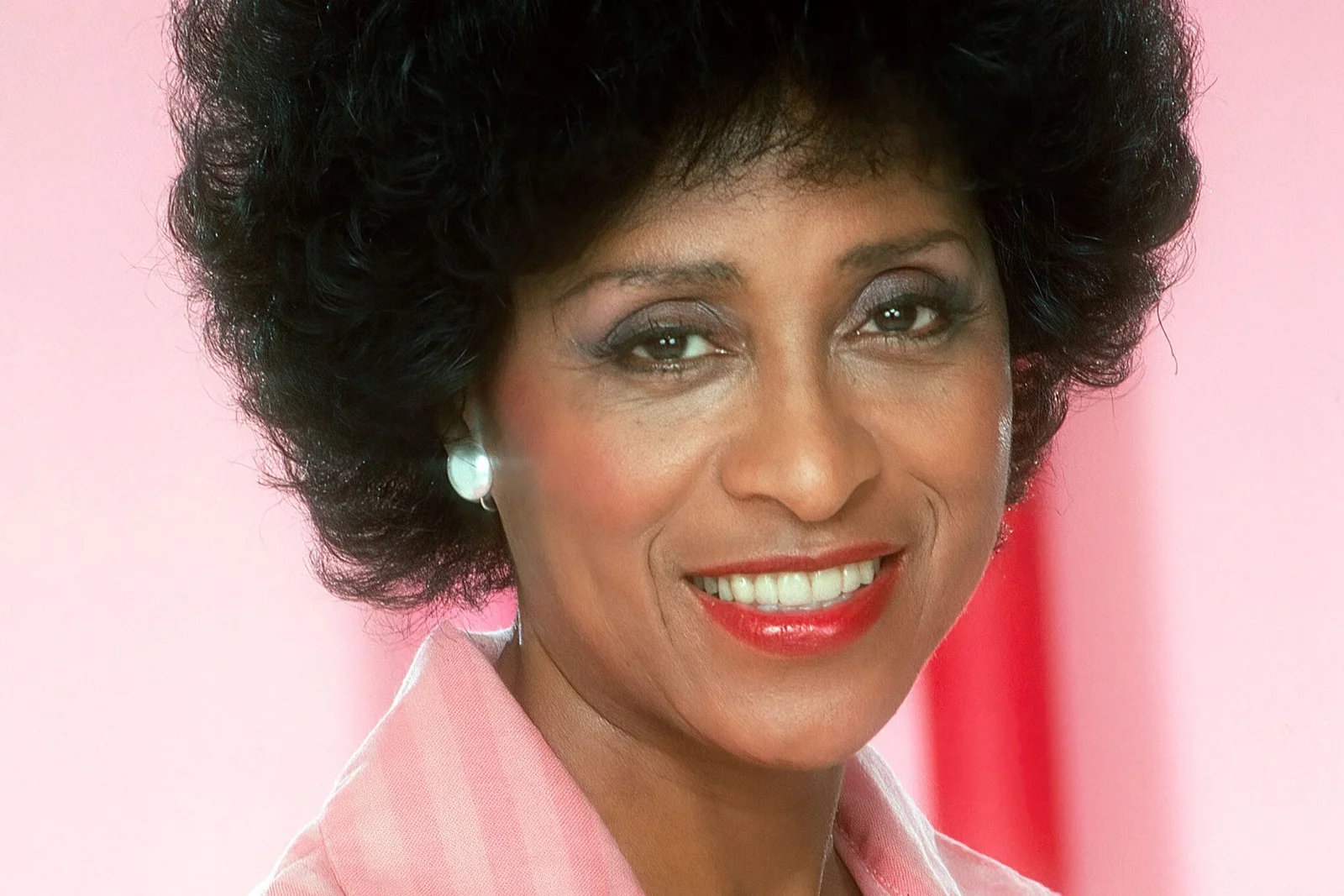
As the sharp-tongued, no-nonsense matriarch of an apartment building, Marla Gibbs created a character whose eye-rolling reactions and perfect comedic timing made her the queen of the putdown. Mary Jenkins ruled her domain from her apartment stoop, commenting on neighborhood happenings with a mix of skepticism and begrudging affection that felt authentic despite its heightened delivery. Her rivalry with neighbor Sandra Clark (Jackée Harry) produced some of the decade’s most memorable comedic exchanges, with Gibbs’ deadpan reactions serving as the perfect counterpoint to Harry’s flamboyance.
What made Mama Morton particularly iconic was how she represented and celebrated working-class Black womanhood at a time when such characters were rarely centered in network television. Her signature catchphrase “Mary!” (usually exclaimed by her husband Lester after one of her schemes went awry) became immediately recognizable to viewers. Despite being the straight woman in many comedic scenarios, Gibbs imbued Mary with enough quirks and flaws—her nosiness, her gambling adventures, her get-rich-quick schemes—to make her much more than just a reaction machine for the more outlandish characters around her.
8. Gordon Gekko (Michael Douglas) – “Wall Street”

Though appearing in a drama, Michael Douglas’ portrayal of the sleek, slick-haired corporate raider became a comedic archetype representing ’80s excess at its most extreme. His “greed is good” speech wasn’t meant to be funny, but Douglas delivered Gekko’s philosophy with such conviction and charisma that the character became both a satire and celebration of Reagan-era capitalism. With his power suspenders, slicked-back hair, and mobile phone the size of a brick, Gekko became visual shorthand for ’80s financial ambition.
The genius of Douglas’ Oscar-winning performance was how he made Gekko’s outrageousness seem not just plausible but almost reasonable within the film’s universe. Though created as a cautionary villain, Gekko ironically inspired countless young people to pursue careers in finance, completely missing the film’s intended message. Few characters have so perfectly captured their era’s contradictions or had their imagery and catchphrases so thoroughly enter the cultural lexicon—anytime someone in a business suit with slicked-back hair says “lunch is for wimps,” they’re channeling the over-the-top essence of Gordon Gekko.
9. Balki Bartokomous (Bronson Pinchot) – “Perfect Strangers”
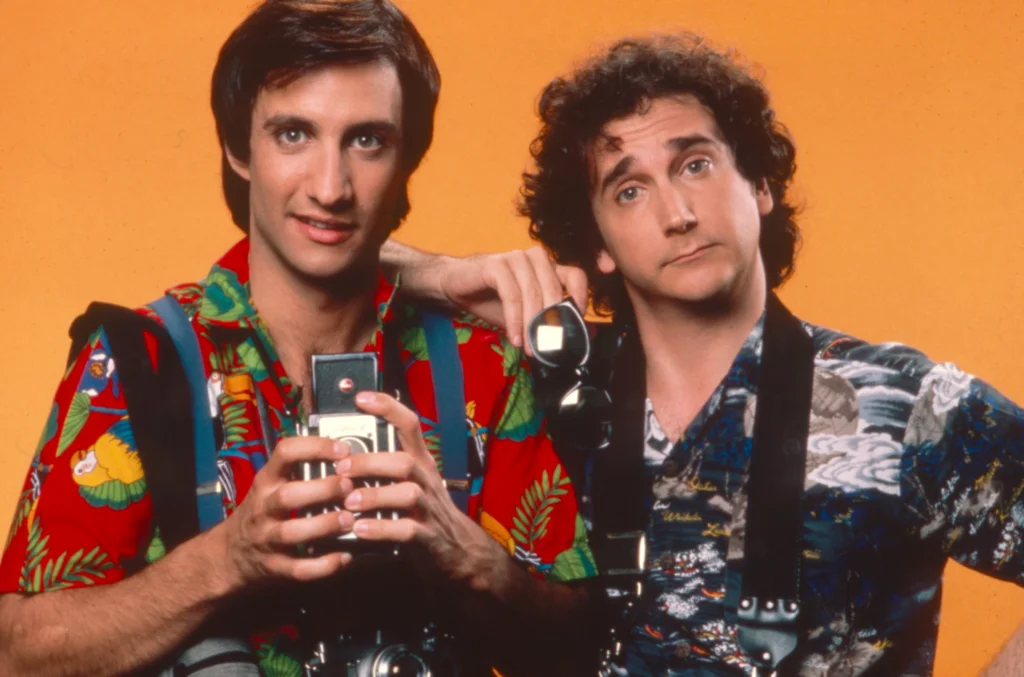
With his mangled English, bizarre customs from the fictional island of Mypos, and inexhaustible optimism, Bronson Pinchot’s immigrant character could have been an offensive stereotype but instead became a beloved fish-out-of-water whose “Dance of Joy” captivated viewers. Balki’s wide-eyed wonder at American life and his constantly misunderstood idioms (“Well, paint me green and call me a cucumber!”) provided an outsider’s perspective that was simultaneously absurd and insightful. His exaggerated accent and physical comedy—particularly when teaching cousin Larry the traditions of Mypos—made him instantly recognizable.
What elevated Balki beyond caricature was Pinchot’s ability to infuse genuine heart into even the most ridiculous scenarios, making viewers care about this strange foreigner and his unlikely friendship with uptight Larry Appleton. The character became so popular that Balki’s catchphrase “Don’t be ridiculous!” entered the national vocabulary, with children across America attempting their own versions of his distinct accent and mannerisms. In a decade often characterized by materialism, Balki’s innocent values and unwavering loyalty offered a comedic counterpoint that resonated with audiences seeking authenticity beneath the humor.
10. Ed Grimley (Martin Short) – “SCTV” and “Saturday Night Live”
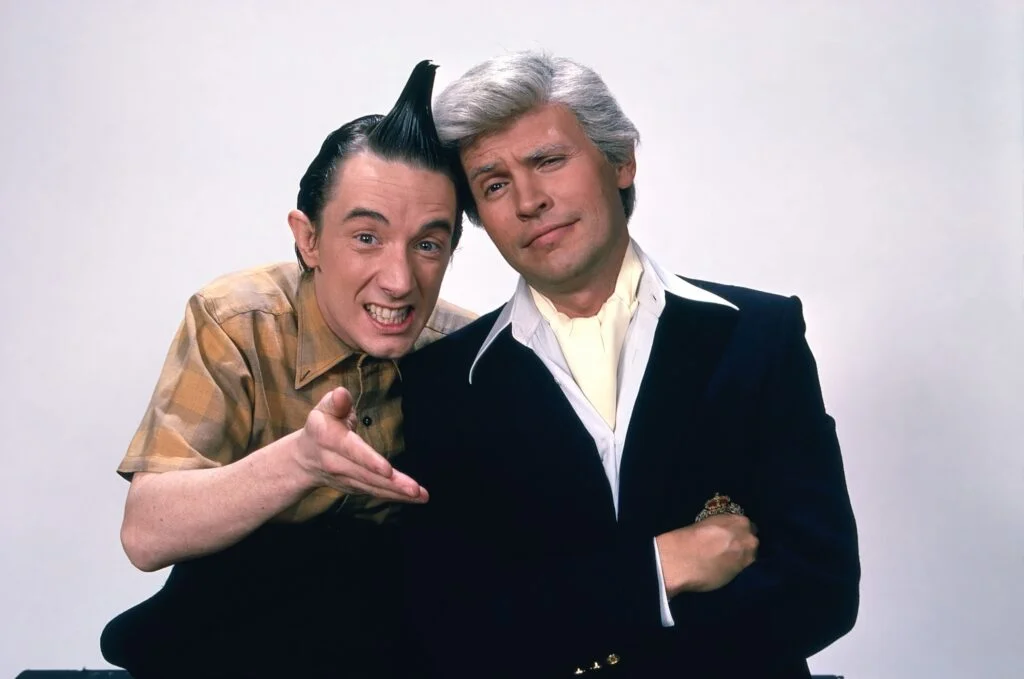
With his gravity-defying cowlick, high-waisted pants pulled nearly to his armpits, and obsession with Pat Sajak, Martin Short’s manic man-child character became one of the decade’s most distinctive comic creations. Ed’s signature move—frantically playing air triangle while declaring things “totally decent, I must say”—was as bizarre as it was hilarious, embodying the random, absurdist streak that defined cutting-edge ’80s comedy. His unpredictable physical comedy included sudden pratfalls and a peculiar sideways shuffle-dance that defied both gravity and logic.
What made Ed Grimley truly remarkable was how Short built an entire comedy universe around such a fundamentally strange character, eventually leading to Ed starring in his own Saturday morning cartoon show. The character worked because beneath the outlandish appearance and behaviors was Short’s impeccable comic timing and commitment to Grimley’s earnest enthusiasm for the mundane aspects of life. Ed represented comedy at its most purely joyful and uninhibited, reminding audiences that sometimes the funniest characters are those who seem to have arrived from another dimension entirely.
11. Bull Shannon (Richard Moll) – “Night Court”

Standing at 6’8″ with a gleaming bald head and childlike demeanor, Richard Moll’s bailiff character was a study in delightful contradictions—a mountain of a man with the gentle soul of a teddy bear. Bull’s signature slow delivery of “Ooo-kay” and his oddly philosophical observations (“Sometimes life is like an Eskimo driving a snowmobile—pretty cool!”) made him far more than just visual comic relief. His towering physical presence was consistently undermined by his sweet nature and unexpected vulnerability, creating comedy through contrast.
Moll’s committed performance elevated what could have been a one-note character into a beloved ensemble member whose bizarre hobbies—tropical fish, origami, ventriloquism—revealed surprising depths. Bull’s friendship with fellow bailiff Roz (Marsha Warfield) produced some of the show’s most memorable exchanges, with his literal-mindedness bouncing perfectly off her world-weary pragmatism. In a show filled with eccentric characters, Bull Shannon stood out (literally and figuratively) as one of television’s great gentle giants, proving that over-the-top physical comedy could coexist with genuine heart.
12. Audrey II – “Little Shop of Horrors”
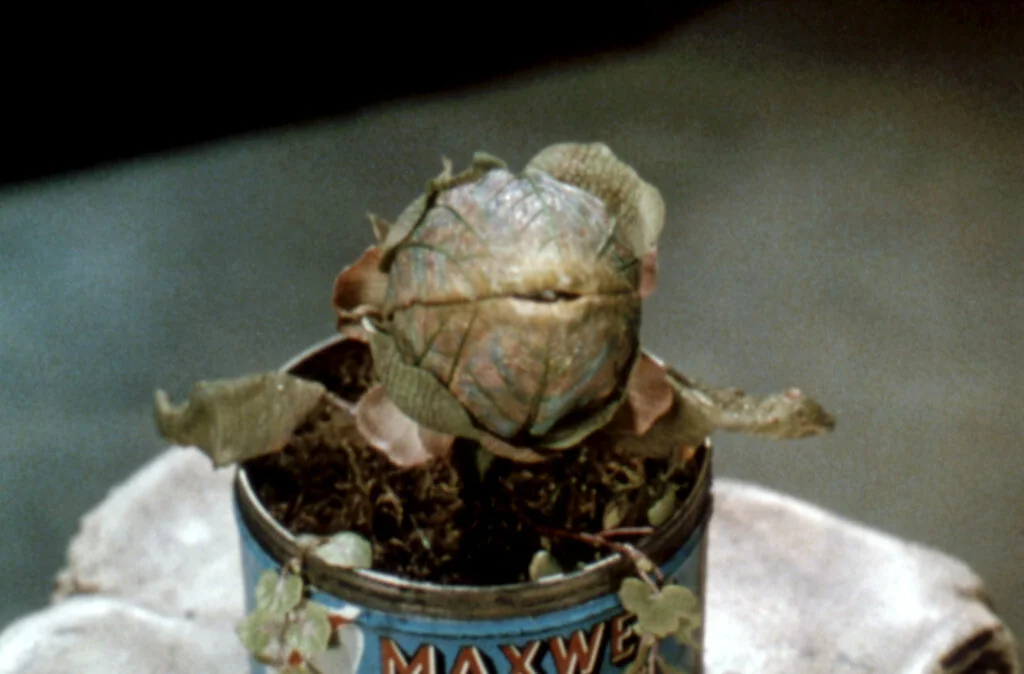
A trash-talking, soul-singing, man-eating alien plant might seem an unlikely comedy icon, but the foul-mouthed flytrap from “Little Shop of Horrors” captured audiences’ imagination with its Motown-inspired musical numbers and increasingly outrageous appetite. Voiced with scene-stealing gusto by Levi Stubbs of the Four Tops, Audrey II’s manipulative charm and escalating demands (“Feed me, Seymour!”) created humor through progressive absurdity. The plant’s insatiable hunger served as a perfect metaphor for ’80s consumerism while delivering genuinely hilarious dialogue.
What made this botanical villain so iconic was how it combined cutting-edge puppetry with classic B-movie sensibilities, creating something that felt both nostalgic and entirely new. The plant’s physical transformations—from adorable seedling to room-filling monster—mirrored its evolving personality, from coy tempter to domineering villain. Few fictional characters from any decade can claim to have inspired both nightmares and belly laughs in equal measure, but Audrey II’s perfect blend of horror comedy made it an instantly recognizable cultural touchstone that continues to bloom in revivals and adaptations decades later.
The 1980s gave us more than just memorable characters—it delivered comic creations so distinctive and fully realized that they transcended their original context to become cultural reference points we still recognize today. These weren’t just roles actors played; they were force-of-nature personalities that captured something essential about humor, excess, and individuality. Whether through catchphrases, visual signatures, or sheer comedic commitment, these over-the-top characters remind us why the ’80s remains such a fascinating and influential decade for comedy. They weren’t just funny—they were unforgettable.

